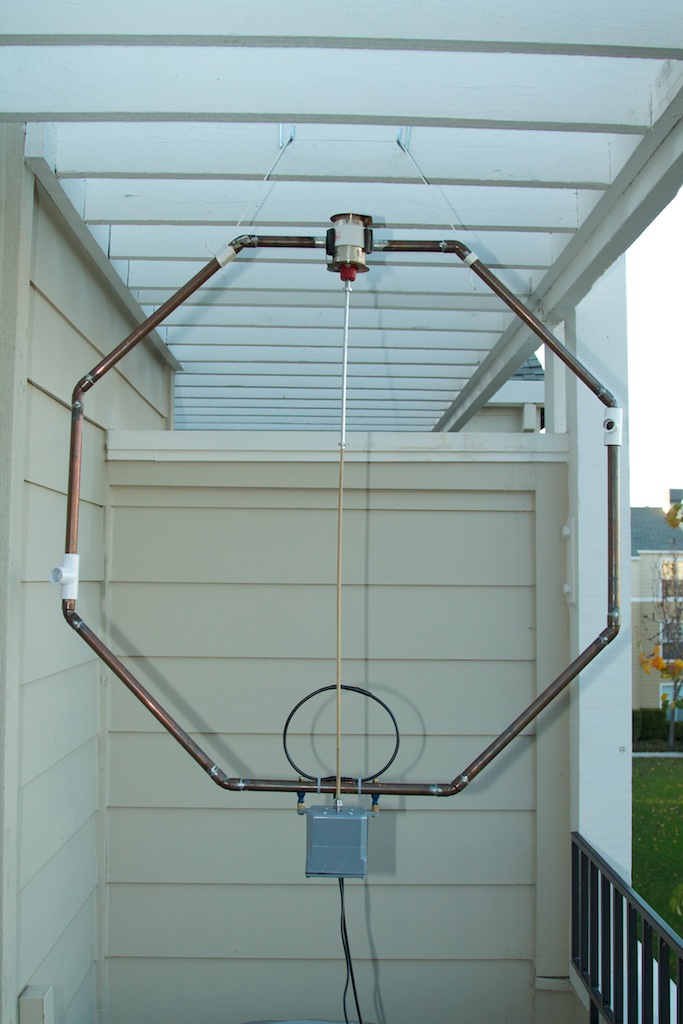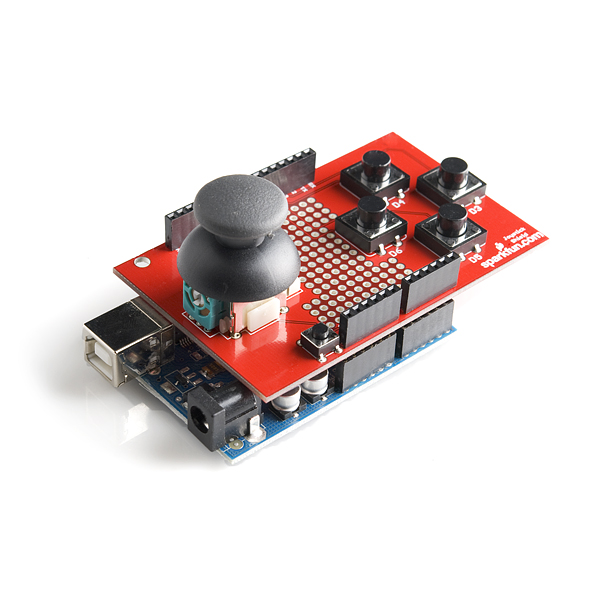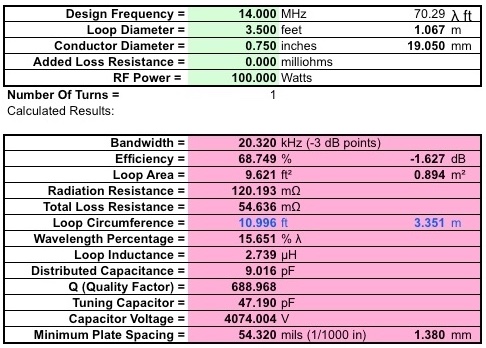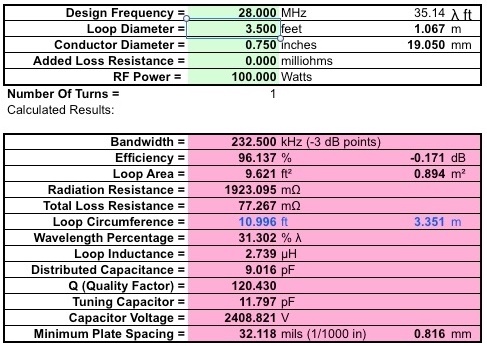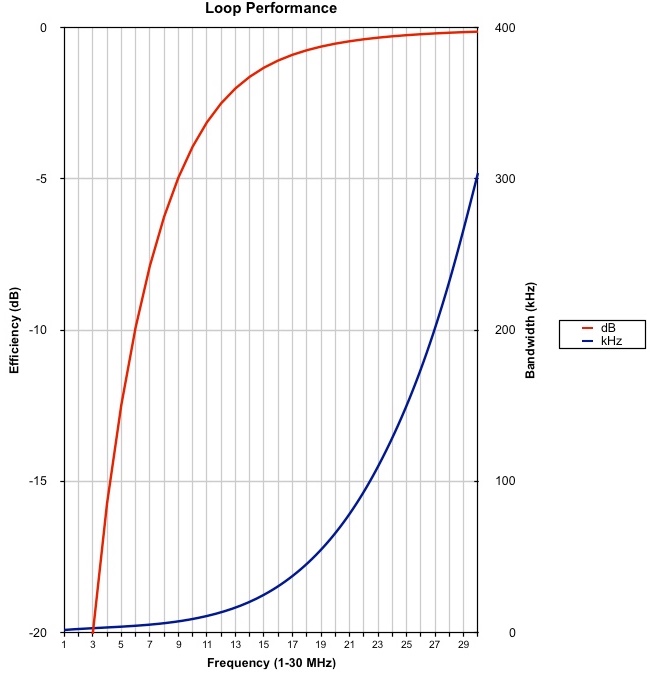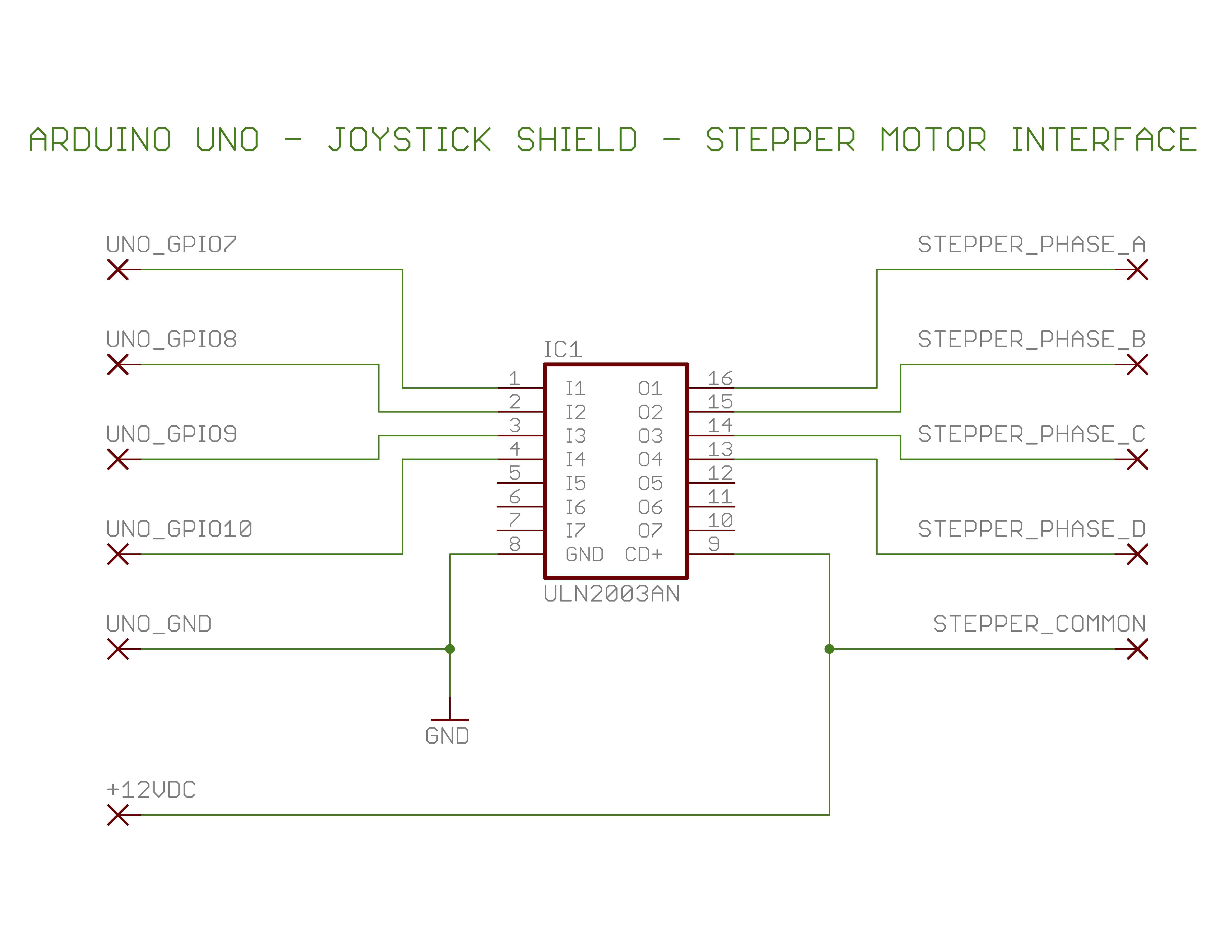This antenna was built when an extremely small antenna was required for operation on 20-meters through 10-meters, using a 100-Watt transceiver, at a location with antenna restrictions. The antenna was used to work a great deal of DX on 20m and 15m, using the JT65-HF mode. Of course this antenna is not as efficient as a full sized antenna, but where a compromise antenna is needed for 20m through 10m, the Magnetic Loop offers good performance for what it is (and certainly much better performance than a mobile antenna could ever achieve).
